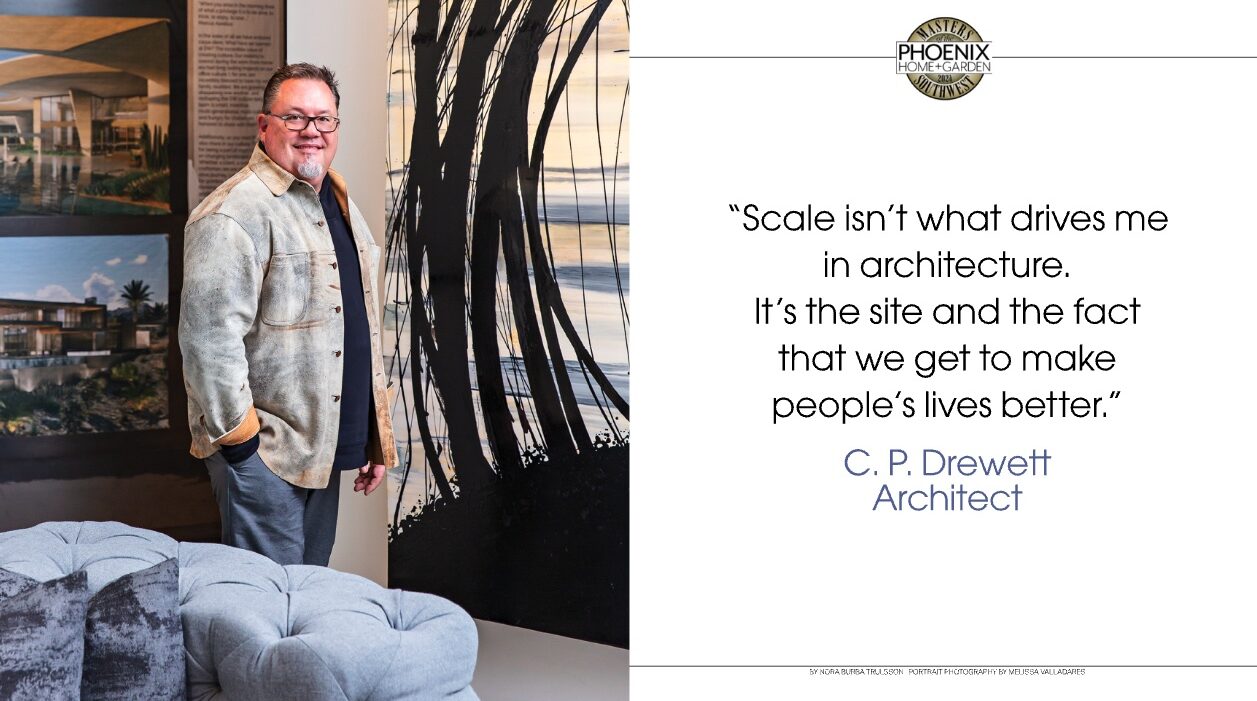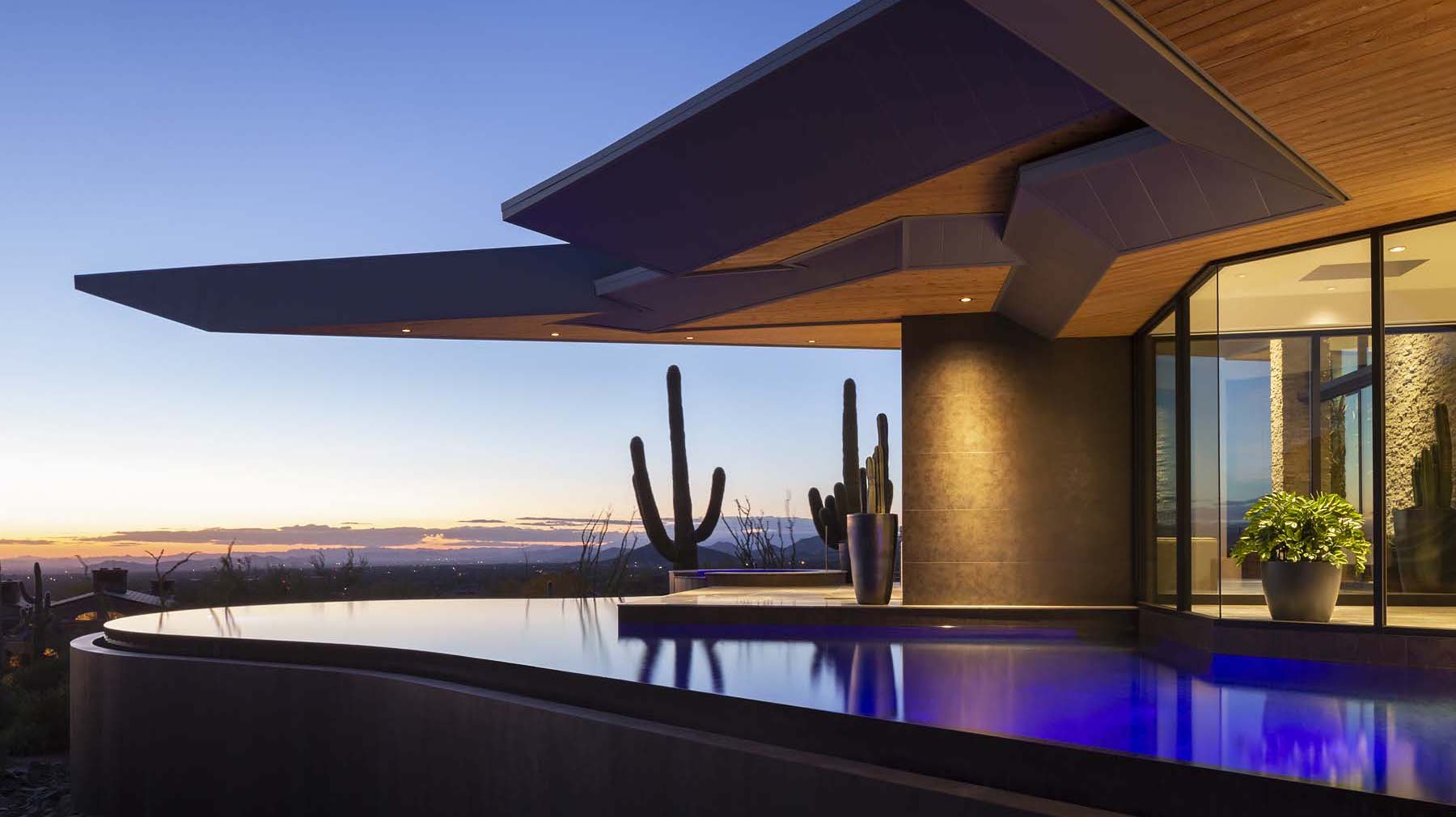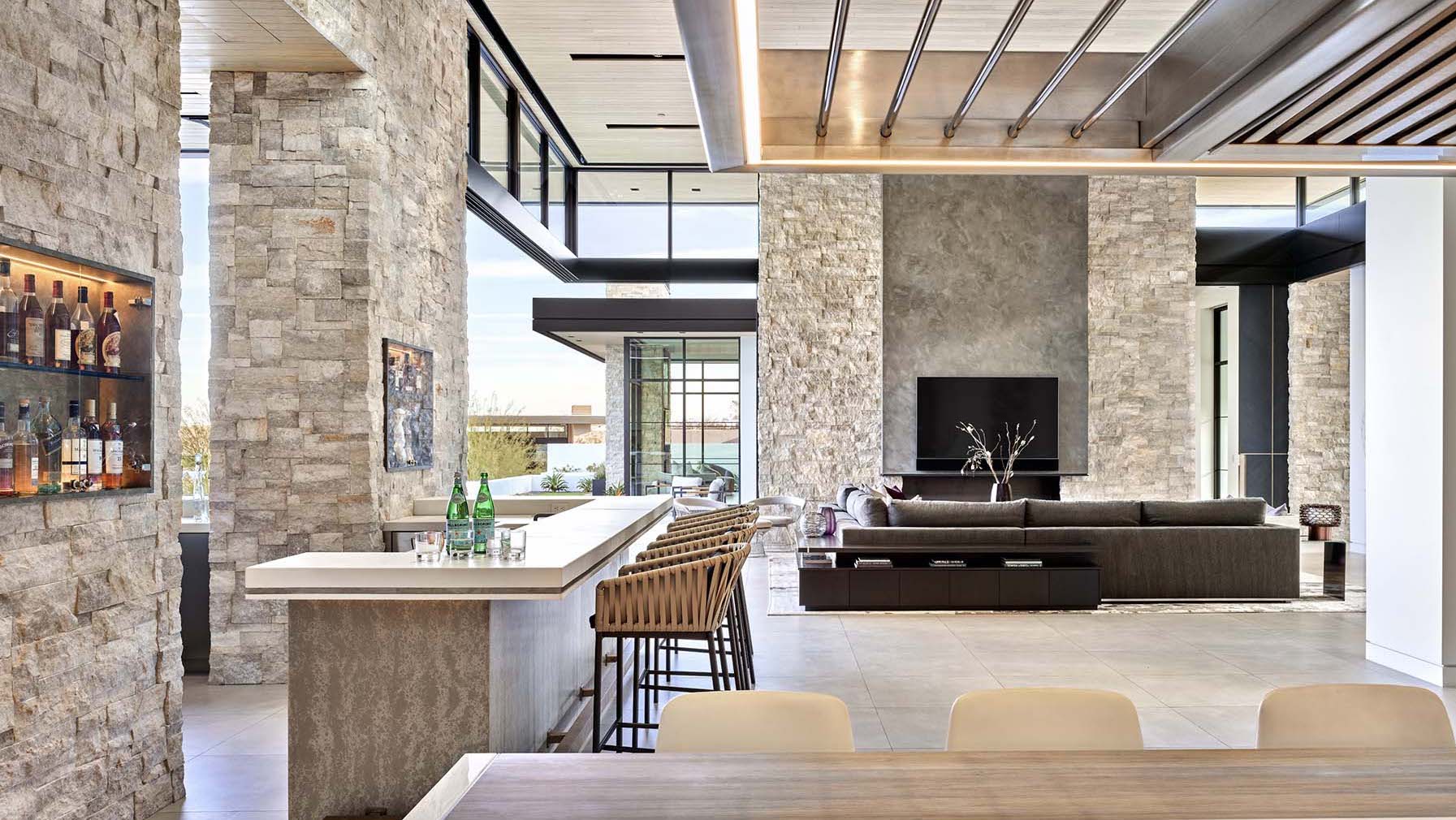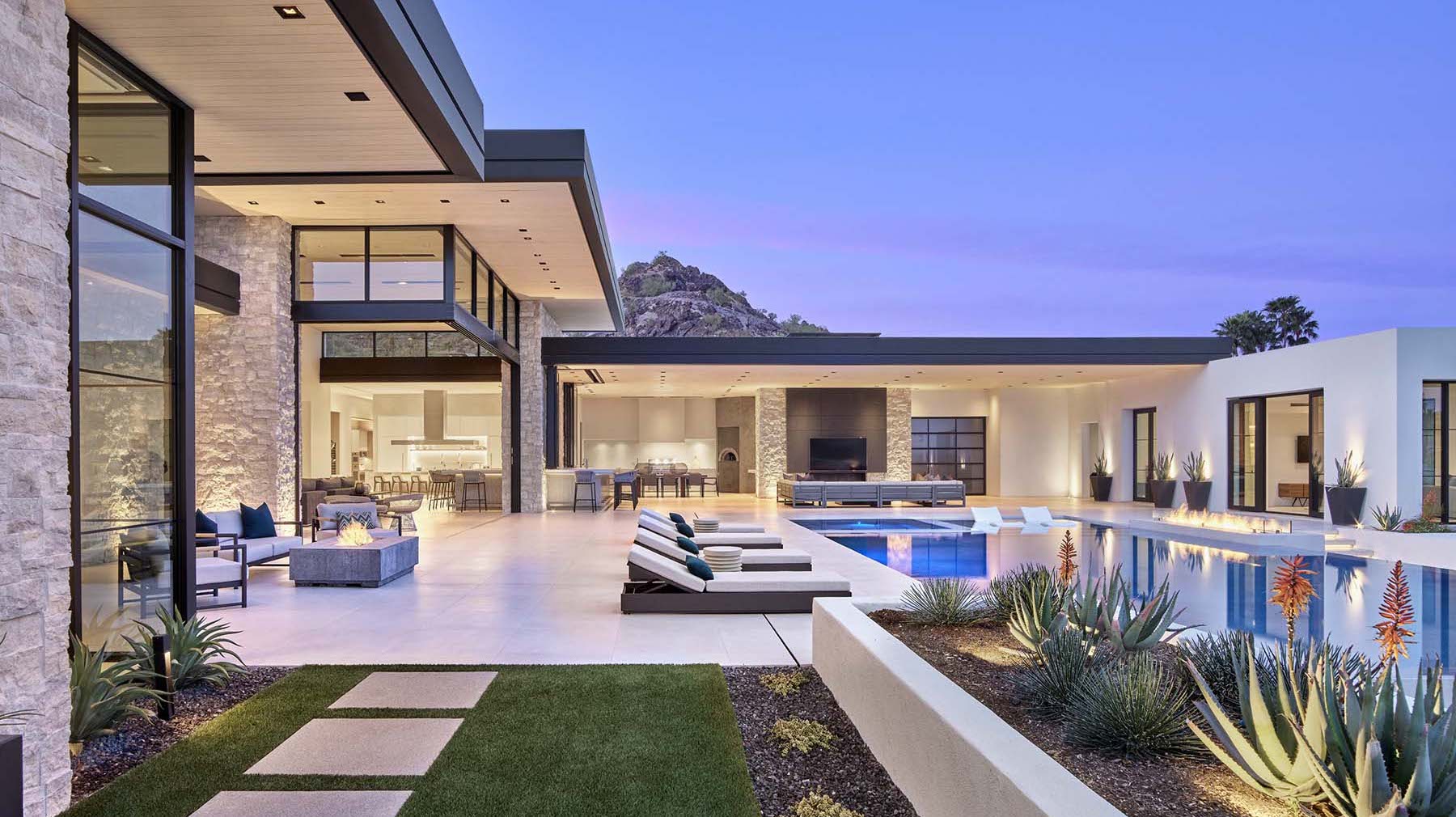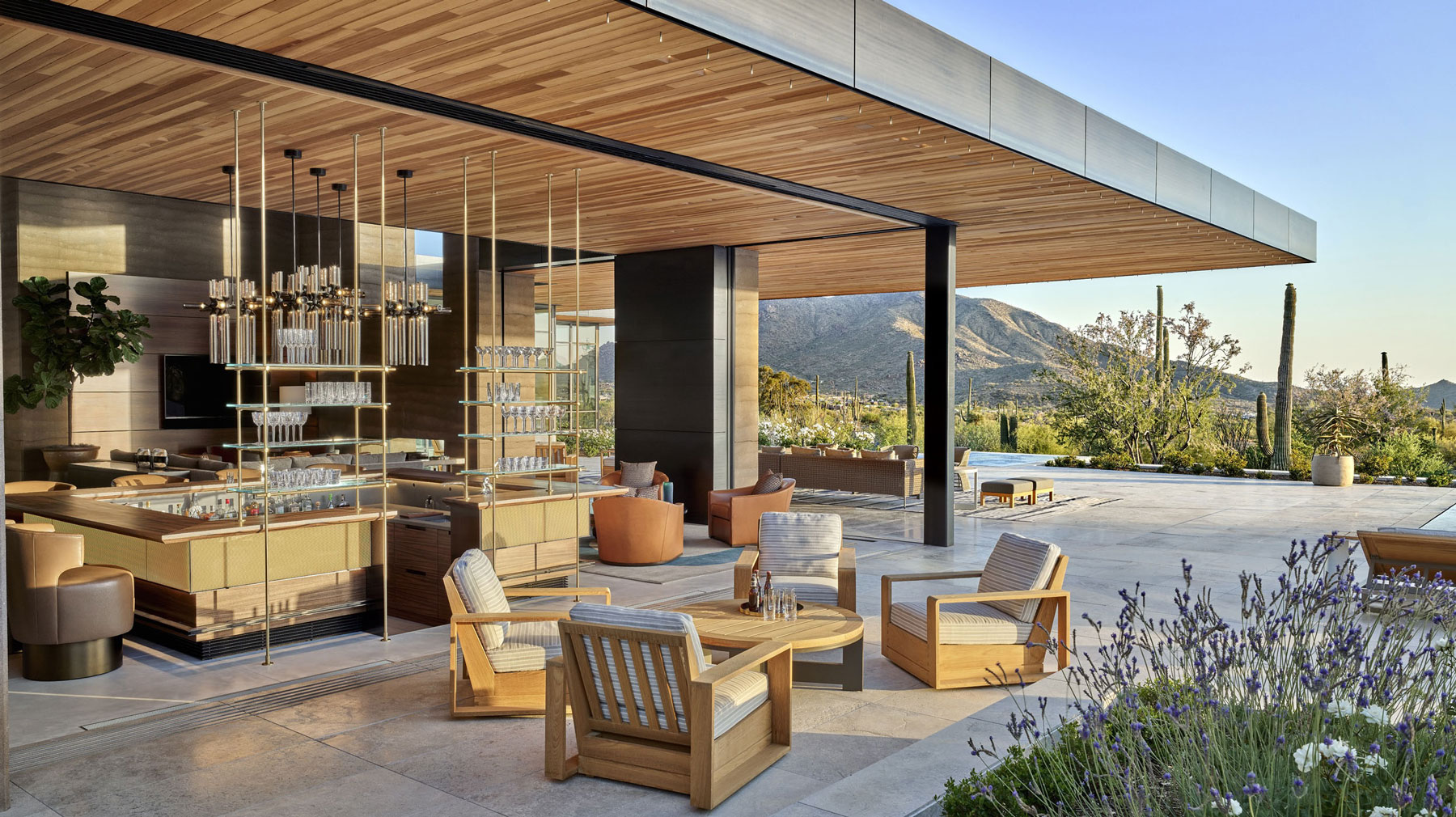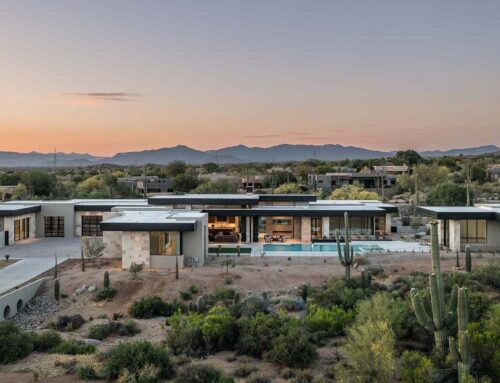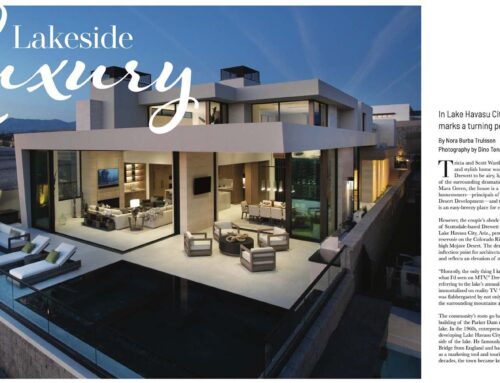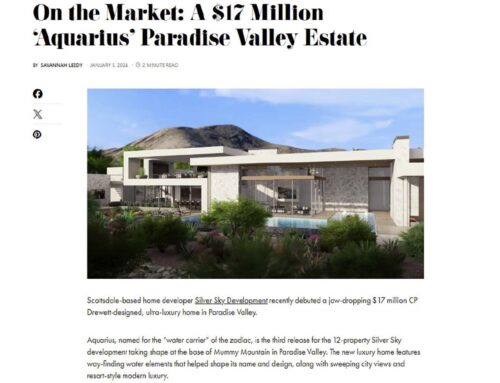Drewett Works founder and president, architect C.P. Drewett, was recognized by Phoenix Home & Garden magazine as a 2024 Master of the Southwest for his exemplary body of work personifying the best of the Southwest. This prestigious designation is also a result of the respect and praise he has earned from his clients and peers over the years.
Drewett Works’ would like to thank Phoenix Home & Garden for the exceptional honor of joining the class of 2024 Master of the Southwest, Nora Burba Trulsson for her outstanding writing and portrait photographer Melissa Valladares for her ability to capture the true essence of C.P. Drewett. The story appears in the February/March 2024 edition of the magazine.
C.P. Drewett–Master of the Southwest 2024
This prolific architect is known for his minimalist, modern approach to home design.
Written by Nora Burba Trulsson
On a late afternoon, the sun is slipping behind Camelback Mountain as architect C. P. Drewett sits at the dining table of one of his recently completed houses in Paradise Valley, recalling details of the gracefully minimalist 6,500-square-foot residence. “This was a challenging lot,” Drewett says. “It’s right on a busy street, and that’s where the views of Camelback Mountain are. We had to create internal views and capture the mountain but provide privacy.”
Indeed, the house wraps around and opens onto a Zen-like courtyard. Inside, bands of high windows capture the mountaintop without the road’s distractions. While no two of Drewett’s homes are alike, this one exhibits many of the hallmarks that have made him the go-to architect for spare, modernist design: interiors and exteriors that bleed into one another, light-drenched rooms, the reductive use of elegant materials, tone-on-tone hues, voluminous spaces and, for serious cooks and serial entertainers, double kitchen islands that can handle a crowd.
“C.P. Drewett is willing to take risks and walk outside the limits when it comes to his architecture,” says interior designer and fellow Phoenix Home & Garden Master of the Southwest Claire Ownby, a frequent collaborator on projects. “His scale and proportion are genius. People feel good in his spaces.”
The road to Drewett’s design success was not typical. Rather than a childhood filled with time absorbing art and architecture, Drewett’s background was more hands-on, practical. “My dad was a Marine Corps aviator and in the Army National Guard,” he explains. “We moved every two years, so I’m from nowhere and everywhere.” Along with the relocation, his father would zero in on “the worst house in the best neighborhood” and set to work remodeling their homes, enlisting his willing son to help him with everything from drywall to furniture-making. “We were the first ‘fix and flippers’ back then,” Drewett remembers. “My father and I could work together without speaking—we were so in tune. I still love working with people that way.” Remodeling the family homes morphed into after-school and summer jobs in construction, where he tackled everything from framing and masonry to cabinet making. “I stapled insulation one summer,” he says. “It was itchy and the worst.”
Eventually, Drewett learned to appreciate the art of building, which led to an interest in architecture. “I loved the infinite solutions,” he says, “mining the depths and finding what works. That’s still what makes me tick.” To help pay for school, he joined the National Guard at 17, then headed to Louisiana State University for a bachelor’s in architecture. With family in the area, Drewett chose Phoenix as the city where he could launch his career, scheduling 14 interviews with architecture firms in two days during one spring break trip.
Drewett got lucky and found positions at local firms but realized that working for others wasn’t in the cards for him. “I wanted to be someplace where I could invest in myself,” he explains. “It turns out, that was launching my own company in 2001.”
With the support of his wife, Elizabeth, who now handles marketing and human resources for the firm, Drewett turned his Phoenix home’s dining room into his first office and lucked out when one of his first solo residential projects was chosen to be a public designers’ show house and toured by thousands. “That house was fodder for our phone ringing,” Drewett says. “It was 100% my first calling card.”
Fast-forward some two decades, and Drewett’s firm now numbers 24 members, including his son, Langdon, a recent architecture grad. Keeping laser-focused on work, Drewett estimates he’s completed more than 500 projects, mostly residences, but some commercial and hospitality work as well. While his average house project is between 7,000 and 8,000 square feet, he points out the yin and yang of his work, ranging from 750-square-foot, built-to-rent home units in Buckeye to a 70,000-square-foot abode on 250 acres in the north Valley called “STRATA,” immortalized in a coffee table book.
With his work, Drewett enjoys the process of collaboration, particularly when it comes to interiors. “I am a serial collaborator,” Drewett says. “I like hearing other people’s voices in my work.” He often works with Ownby as well as David Michael Miller, also a Master of the Southwest, and other designers who appreciate his restrained approach. “C. P. is a welcoming pro who embraces your ideas and gives you running space,” says Miller, who worked with Drewett on the STRATA residence and other houses. “It’s not ‘architecture first, then interiors’ with him. Everything evolves on a common timeline.”
Though not following trends, part of Drewett’s success has been his uncanny knack for knowing what the market wants, creating Mediterranean-influenced abodes for Scottsdale’s Silverleaf community, interpreting farmhouse influences for Arcadia, channeling organic touches for desert houses and, for a recent enclave of 11 Drewett- designed homes in Paradise Valley, going full-out modernist, thanks to his architectural heroes such as Mies van der Rohe and Renzo Piano.
How does he do it? “I guess I have a nose for it,” he says. “I try to pay attention to all kinds of design—automotive, textiles, fashion, colors. It feeds my designs.” Drewett’s prediction for the next architectural influences? Art Deco as well as Arts and Crafts motifs. Don’t expect versions of the Chrysler Building or Gamble House to pop up on his drawing board. Instead, he says, look for subtle details, such as finishes or exposed joinery.


